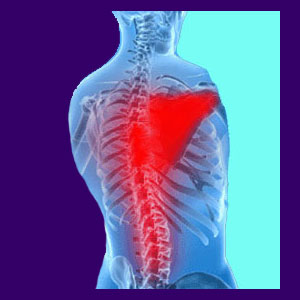
Pinched nerve back pain can exist in virtually any area of the back or neck, however it should not endure for long if the nerve is truly compressed. A pinched nerve is a common use term for a compressive neuropathy condition, which describes neurological tissue which is being impinged upon by some other anatomical structure. While most compressed nerves are diagnosed in the spine, many are theorized to exist in the buttocks and upper back, as well as virtually anywhere else in the anatomy.
Any pinched nerve can cause pain, but few are able to generate any type of chronic back ache. This is because a nerve which is truly compressed will cease signaling completely in a matter of days or weeks in most instances. Therefore, chronic dorsalgia is unlikely to result from compressive neuralgia conditions. Let’s take a deeper look at the many inconsistencies of the pinched nerve diagnosis.
Description of Pinched Nerve Pain
A pinched nerve is the term usually reserved for a spinal nerve root compressed by some structural issue in the vertebral column. Usually, the suspected source of compression is a herniated disc or bone spur complex. Sometimes, the condition can be brought on by a severe abnormal spinal curvature, such as lordosis, kyphosis or scoliosis. A vertebral misalignment issue, like spondylolisthesis, can also be implicated in causing pinched nerves.
Nerve signals require an undisturbed passageway in order to function correctly and when a structure pinches down on one of these neurological conduits, the message may be modified or prevented from reaching its intended target destination. In essence, the nerve will stop functioning normally and will not signal at all over time. Therefore,enduring pain is not a logical clinical expression of a real pinched nerve.
Pinched Nerve Back Pain Sources
Pinched nerves in the spine are typically diagnosed when there is severe encroachment of the neuroforaminal space. This is called foraminal stenosis. This is a very common condition throughout the spine and is particularly prevalent in the cervical and lumbar regions. Most cases of reduced foraminal patency do not enact any pain or related symptoms, since the actual nerve is never disturbed. After all, the foraminal openings are more than large enough to accommodate the nerves even when partially blocked.
Research shows that in order for a true pinched nerve to exist in the spine, almost the entire foramen would have to be closed off in totality. This is one of the rarest occurrences possible, although it can exist in extreme circumstances.
Besides spinal compressed nerves, other situations can occur involving muscular impingement of neurological structures, such as piriformis syndrome, thoracic outlet syndrome and Bell’s palsy.
Pinched Nerve Back Pain Explanations
Remember that most pinched nerves are completely misdiagnosed, regardless of where they exist or what the suspected causation may be.
One of the actual sources of apparent pinched nerve symptoms is regional ischemia. This variable process makes far more sense, since it creates integrity issues with the actual nerve fibers, instead of a constant compression profile. This certainly explains why so many incorrectly identified pinched nerve patients suffer pain, when the clinical expectation is numbness and weakness.
It is unfortunate that so many non-neurologist doctors and chiropractors do not even know what to look for when it comes to comparing the expected symptoms of a nerve issue with the actual symptomatic expression. Otherwise, misdiagnosis would almost never take place. Save yourself lots of trouble by making sure to consult with a neurologist for any suspected nerve compression issues. These doctors are specialists in this type of care. Trusting any other care provider may increase your chances for misdiagnosis dramatically.




